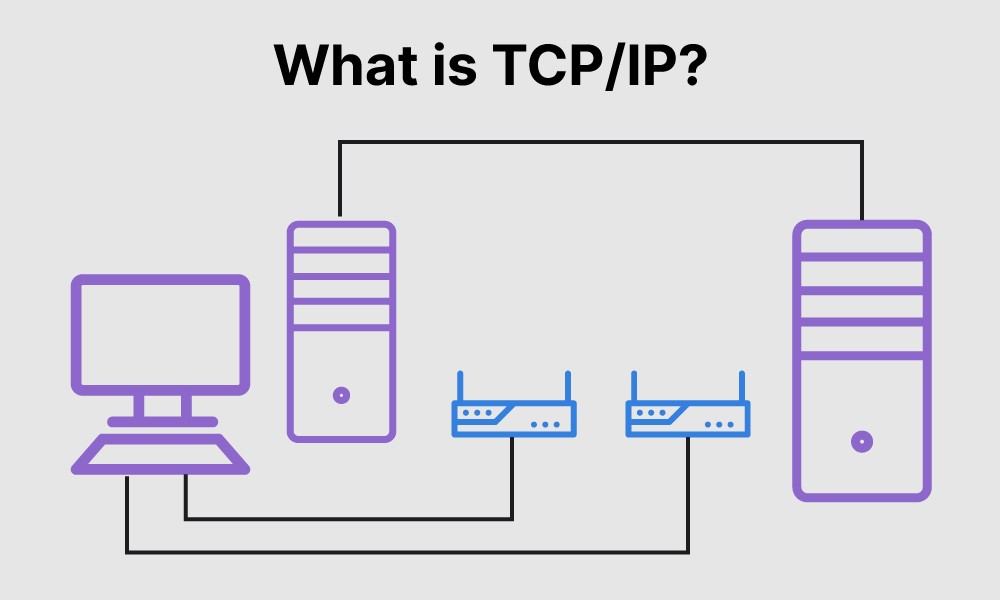Transmission Control Protocol (TCP) is a foundational communication standard that governs how applications and computing devices exchange data over a network. Its primary function is to ensure the reliable and ordered delivery of data packets across the internet. TCP guarantees that data and messages are successfully transmitted and received over networks, making it a cornerstone of modern internet communication.
TCP is a core element within the Internet Engineering Task Force (IETF) standards, which define the rules of the internet. As one of the most widely used protocols in digital network communications, TCP ensures end-to-end data delivery, establishing a reliable channel between sender and receiver.
Before transmitting data, TCP establishes a connection between the source and destination, maintaining it until communication is complete. It segments large data streams into smaller packets, and critically, ensures data integrity throughout the entire transmission process. This reliability makes TCP the protocol of choice for many high-level applications that require guaranteed data delivery.
Applications that rely on TCP include peer-to-peer sharing methods such as File Transfer Protocol (FTP), Secure Shell (SSH), and Telnet. TCP is also used for sending and receiving email using protocols like Internet Message Access Protocol (IMAP), Post Office Protocol (POP), and Simple Mail Transfer Protocol (SMTP). Furthermore, it facilitates web access through the Hypertext Transfer Protocol (HTTP).
 TCP/IP Model Layers and their functions
TCP/IP Model Layers and their functions
TCP vs. UDP: Understanding the Key Differences
An alternative to TCP is the User Datagram Protocol (UDP), which prioritizes low-latency connections and faster transmission times. While TCP is meticulous in its approach, ensuring every packet arrives in order and without errors, this comes at a cost. TCP’s overhead, which includes mechanisms for error detection, retransmission of lost packets, and flow control, can make it a more resource-intensive option.
UDP, on the other hand, sacrifices reliability for speed. It doesn’t guarantee delivery, order, or error correction. This makes UDP suitable for applications where speed is paramount, and occasional data loss is tolerable. Examples of UDP use cases include Domain Name System (DNS) lookup, Voice over Internet Protocol (VoIP), and streaming media.
In essence, TCP is like a guaranteed mail service with tracking and insurance, while UDP is like sending a postcard – faster, but with no guarantee of arrival. The choice between TCP and UDP depends on the specific requirements of the application.
The Role of IP in Data Transmission
The Internet Protocol (IP) is the mechanism for sending data between devices across the internet. Each device possesses a unique IP address, enabling it to communicate and exchange data with other connected devices. IP has become the standard for fast and secure communication directly between mobile devices.
IP defines how applications and devices exchange data packets. It is the primary communications protocol responsible for the formats and rules for data exchange between computers on a single network or across multiple internet-connected networks. This is achieved through the Internet Protocol Suite (TCP/IP), a collection of communications protocols organized into four abstraction layers.
IP is the core protocol within the internet layer of the TCP/IP suite. Its main function is to deliver data packets between the source and destination, using methods and structures that include address information within the data packets.
TCP vs. IP: Distinguishing the Protocols
TCP and IP are distinct protocols that collaborate to ensure reliable data delivery within a network. IP is responsible for identifying and defining the address—the IP address—of the destination device or application. TCP then manages the transportation and routing of data through the network, guaranteeing its delivery to the IP-defined destination. This synergistic relationship enables communication between devices over long distances, optimizing data transfer efficiency.
Think of an IP address as a phone number assigned to a smartphone. TCP is the technology that makes the phone ring and enables the user to talk to the caller.
TCP/IP: A Symbiotic Relationship
The combined term “TCP/IP” reflects the frequent and interdependent use of these two protocols. Data requires both a destination (provided by IP) and a reliable transport mechanism (provided by TCP) to reach its destination safely. Implementing robust security protocols alongside TCP/IP ensures a secure data transfer process between devices.
In conclusion, TCP is a fundamental protocol for reliable data transmission across networks. While protocols like UDP offer speed advantages in certain situations, TCP’s emphasis on data integrity and guaranteed delivery makes it a critical component of the internet’s infrastructure, enabling countless applications and services that rely on secure and dependable communication.

